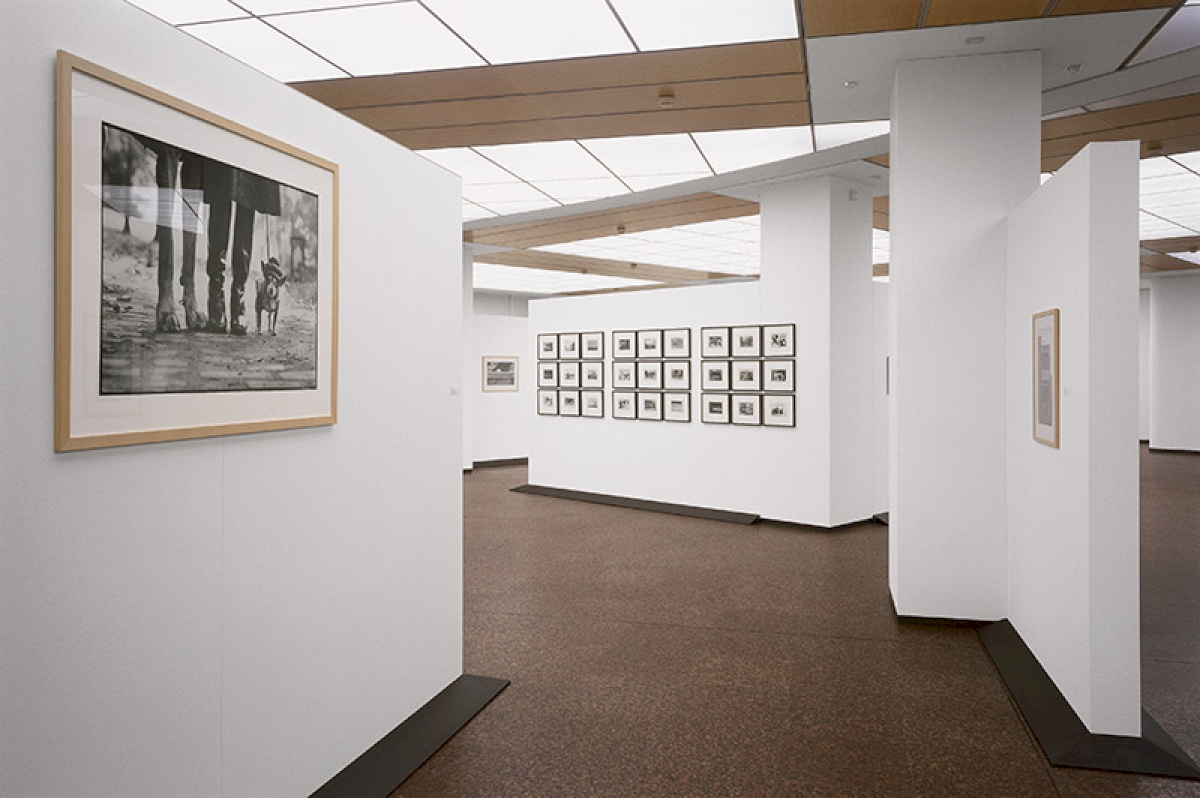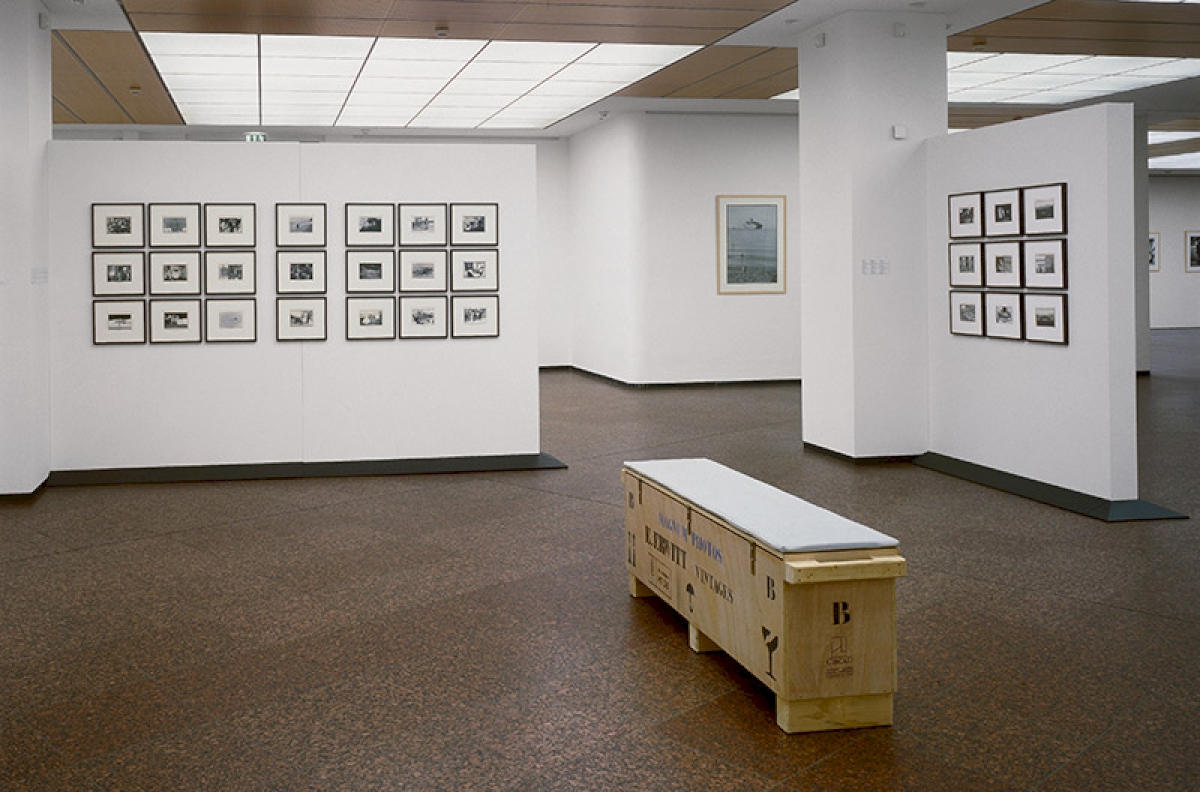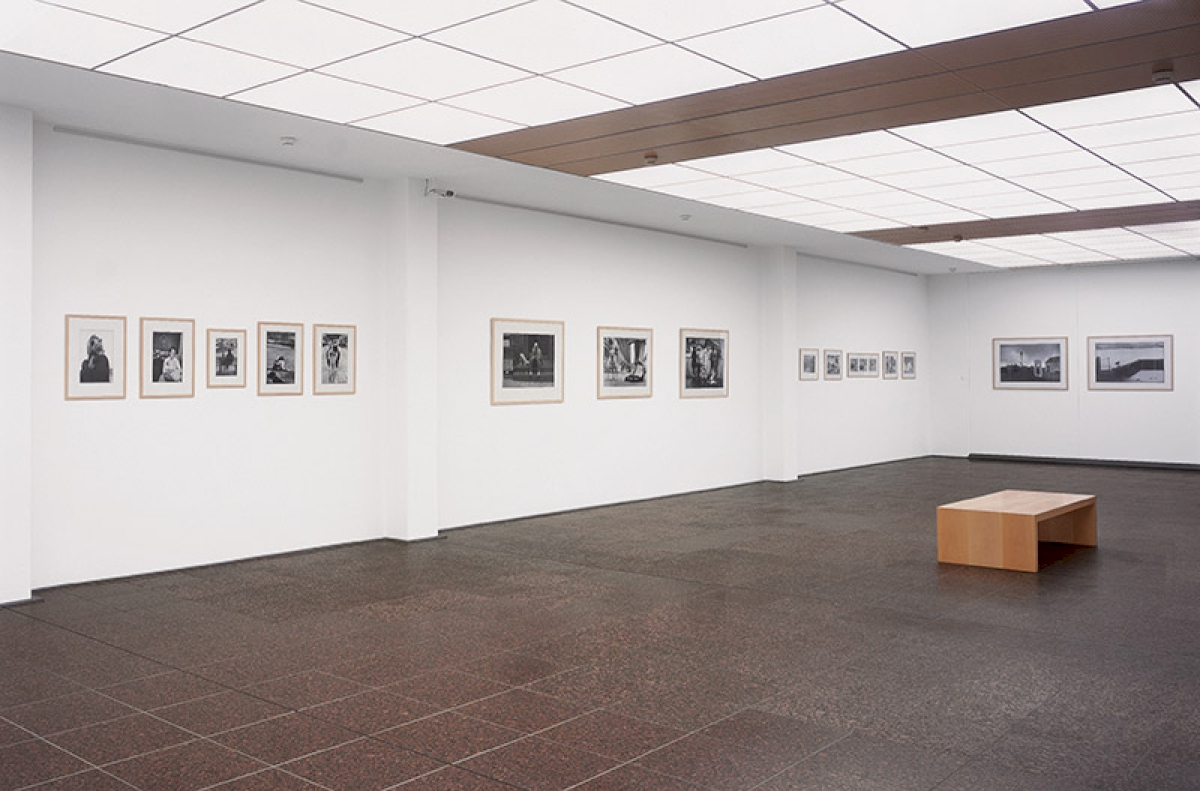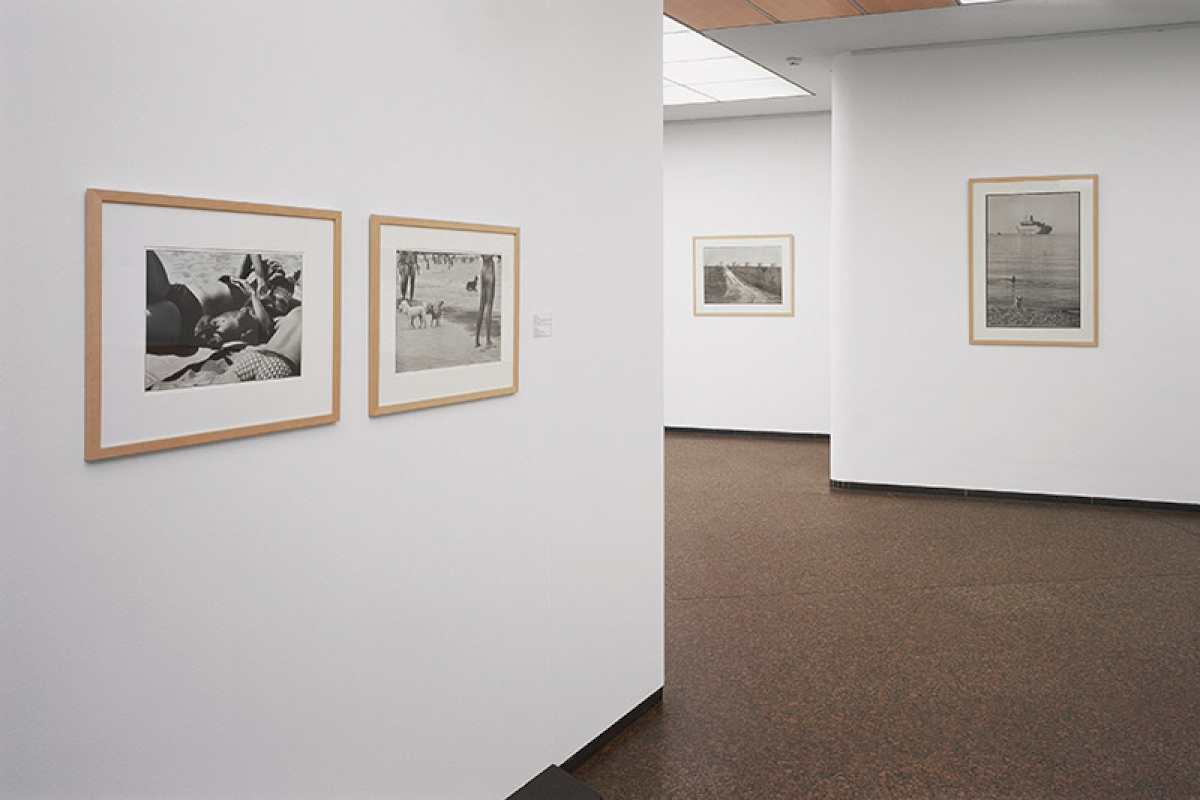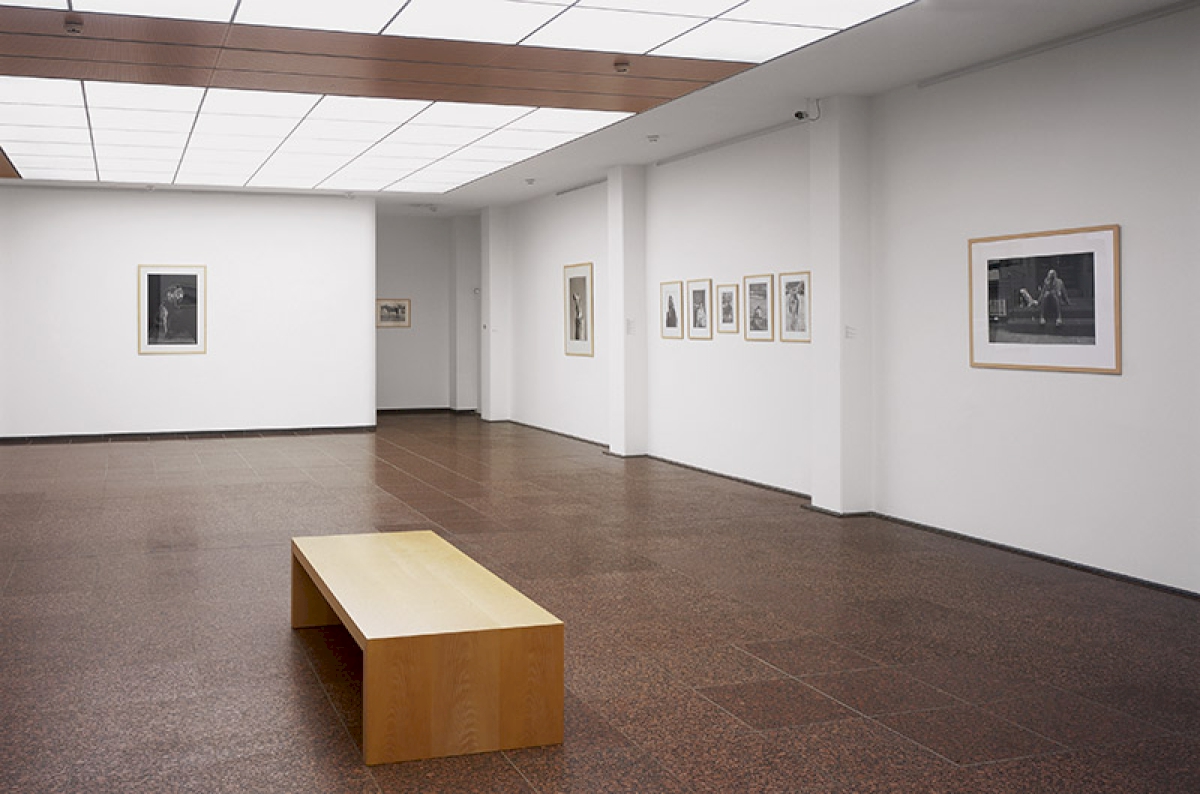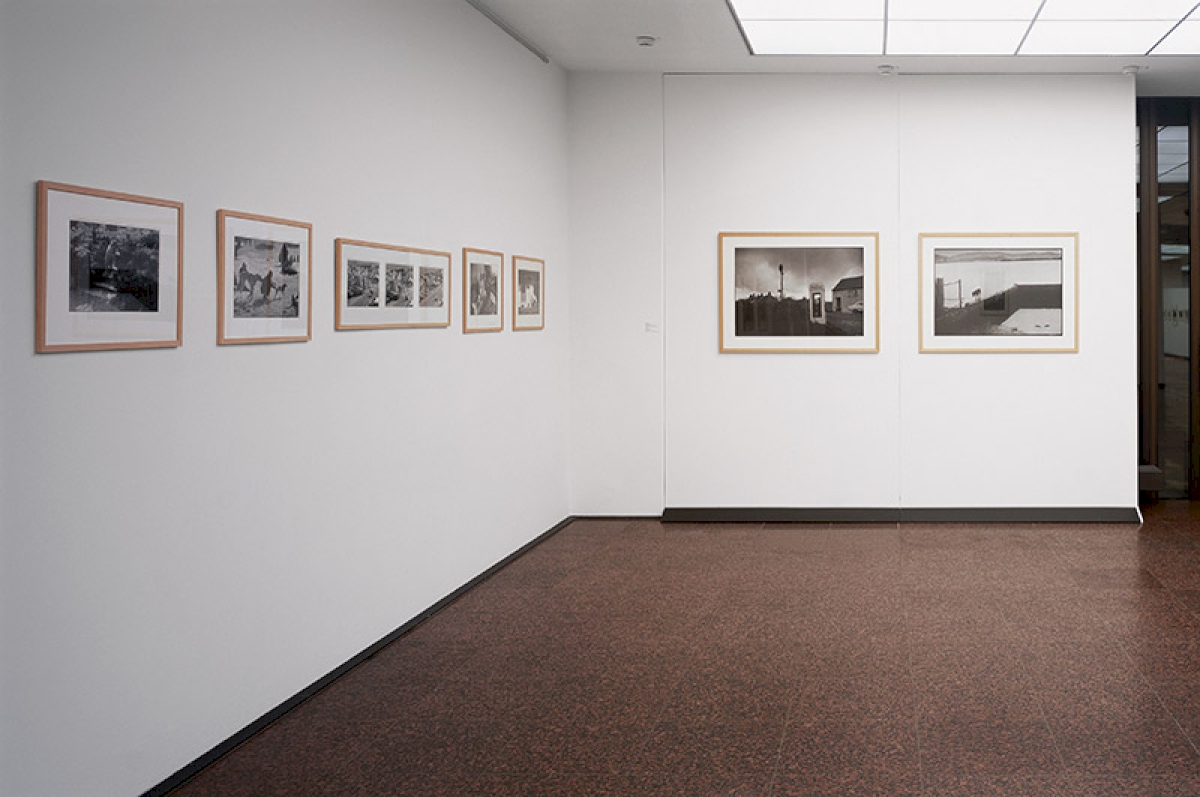Elliott Erwitt: Retrospective vintages & dogs.
He took the first photographs of Soviet rockets and the only group shot of Marilyn Monroe alongside the cast and crew of “The Misfits.” He gained international fame, however, with his humorous pictures of dogs. What distinguishes Elliott Erwitt is his unique ability to sense what is going to happen next. “I rarely stage pictures. I wait for them . . . let them take their own time. Sometimes, you think something’s going to happen, so you wait. It may pan out; it may not. That’s a wonderful thing about pictures– things can happen.“ The legendary photographer not only uses his camera to observe glamorous or politically volatile moments: he also has an eye for the humor of everyday life. With this retrospective, the Kunstfoyer presents works spanning sixty years of photographic history – as the personal statement of a cosmopolite: even as a boy, Elliott Erwitt was forced to come to grips with ever-changing circumstances. Born in 1928 to Russian émigré parents in Paris, he grew up in Milan and was ten years old when his family emigrated to the United States. His first photography-related experience consisted of processing publicity photographs in a Hollywood darkroom. Around that time, he also began taking photographs of his own, photographs that displayed his own distinctively humorous view of the world – and not without success: in 1953 he became a member of the famous Magnum agency. In 1955 Edward Steichen selected several of his photographs for the notable exhibition “The Family of Man.” The Museum of Modern Art hosted his first solo exhibition in 1965. Since then, Erwitt’s photographs have been on exhibition in museums and galleries the world over and have been the subject of numerous publications.
“Making people laugh is one of the highest achievements you can have. And when you can make someone laugh and cry, alternately, as Chaplin does, now that’s the highest of all possible achievements.”
“When photography is good, it’s pretty interesting, and when it is very good, it is irrational and even magical . . . nothing to do with the photographer’s conscious will or desire. When the photograph happens, it comes easily, as a gift that should not be questioned or analyzed.”
“Sometimes, humor is in the photograph, not in the scene you photograph. I mean, you can take a picture of the most wonderful situation and it’s lifeless, nothing comes through. Then you can take a picture of nothing, of someone scratching his nose, and it turns out to be a great picture. What occurs in a scene, in a situation, and what you get in the photograph can be totally different.”
(Quotes: Elliott Erwitt, Personal Exposures, New York: W. W. Norton & Company, 2012)

